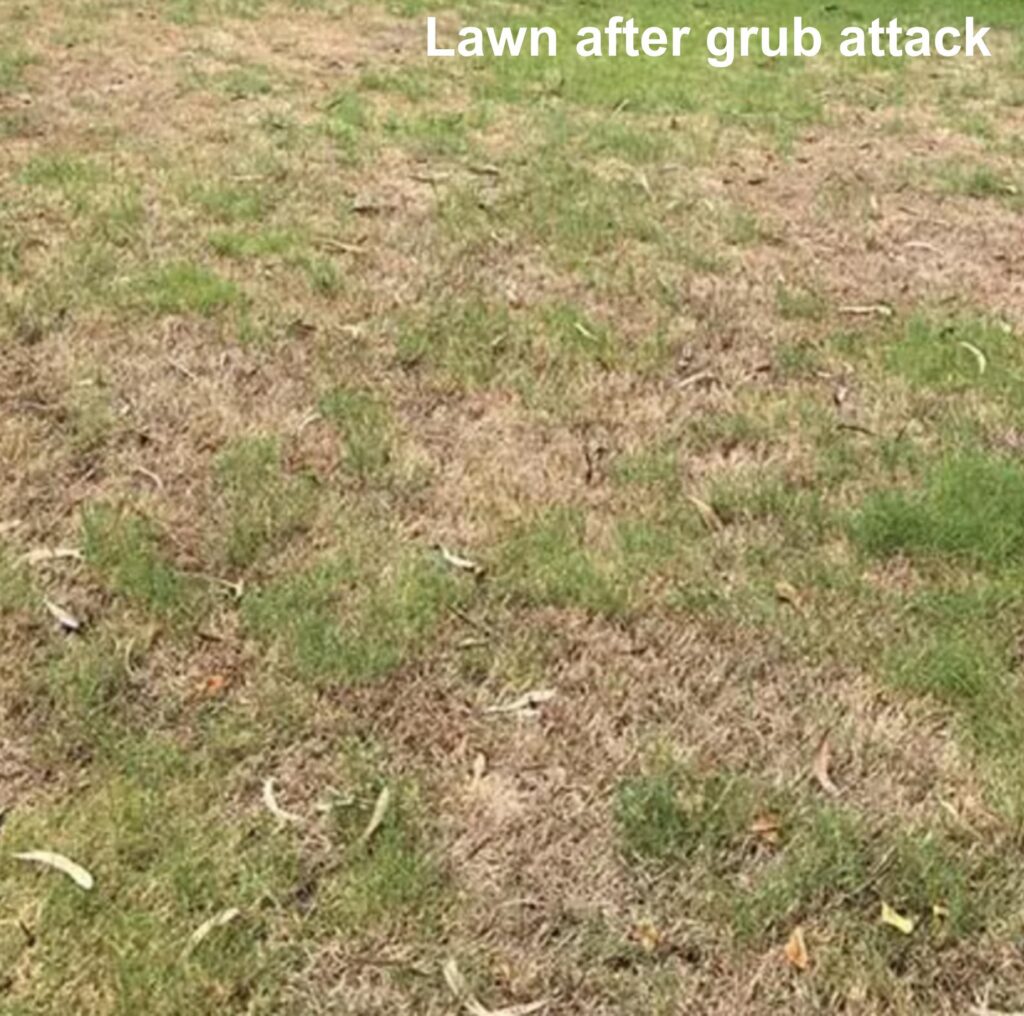If you’ve noticed your grass looking less-than-green lately, we have bad…and good news.
The bad news is that you may have grubs in your lawn. Known by many aliases like “armyworm” and “curl grub”, lawn grubs attack the leaf and stem system or the root of the lawn, leaving dead patches in your grass and ruining your otherwise-beautiful lawn.
The good news? The problem is highly treatable and even preventable. If you suspect there may be grubs in your lawn, read on to find out more about the common signs of a lawn grub infestation, how to treat lawn grubs, the best way to get rid of the pests, and simple steps to save, restore and protect your lawn.
Key takeaways
- A lawn grub infestation can wreak havoc on your lawn.
- Lawn grubs are most prevalent September to March and/or after heavy rain.
- Couch varieties are most prone to attack. Buffalo varieties like Sir Walter are less affected.
- Early action is vital. As soon as you notice an infestation of lawn grubs, treatment should be applied quickly.
- Chemical treatments are most effective when choosing a treatment option.
- This blog covers tips on identifying an infestation, choosing the right solution for your turf variety, as well as preventing future infestations and restoring your lawn.

Understanding lawn grubs
“Lawn grubs” is a collective colloquial name for the young of moths and beetles that feed on your lawn during larvae stage. In South-East Queensland lawn grubs are most prevalent in the warm growth season of September through to March but can be a problem well into cooler months.
See more about lawn grub life cycle here: https://www.westturf.com.au/lawn-grub/
Here are the most common lawn grubs active in our local area:
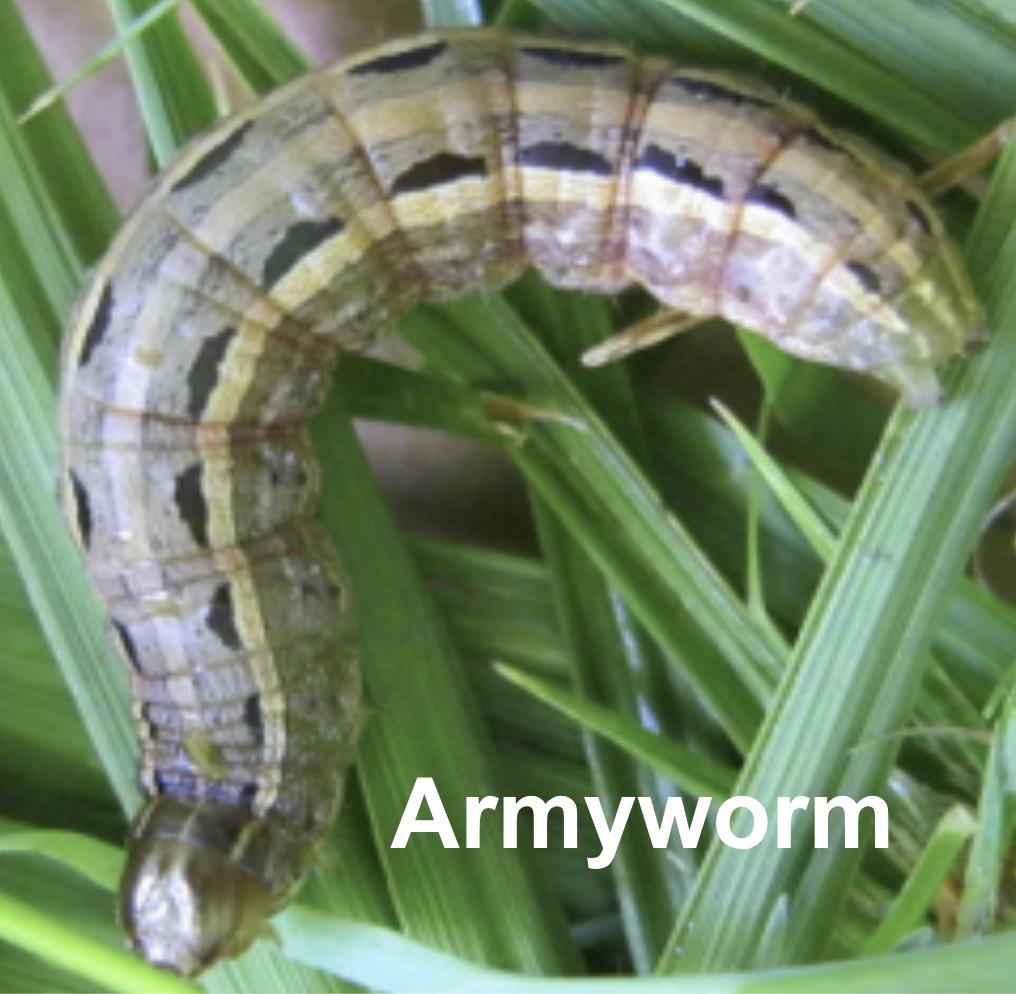
What do they look like?
Parallel white stripes along body. Up to 40mm. Green, brown or yellow with three parallel white stripes from head to tail.
What are they doing in my lawn?
They live in the thatch at base of plant and feed at night on leaves and stems. May travel as an “army” across the grass looking for food, particularly if overcrowded and hungry.
How did they get there?
Moth fly in and can lay up to 1000 eggs anywhere in your garden, on structures, eaves, fences, outdoor furniture.
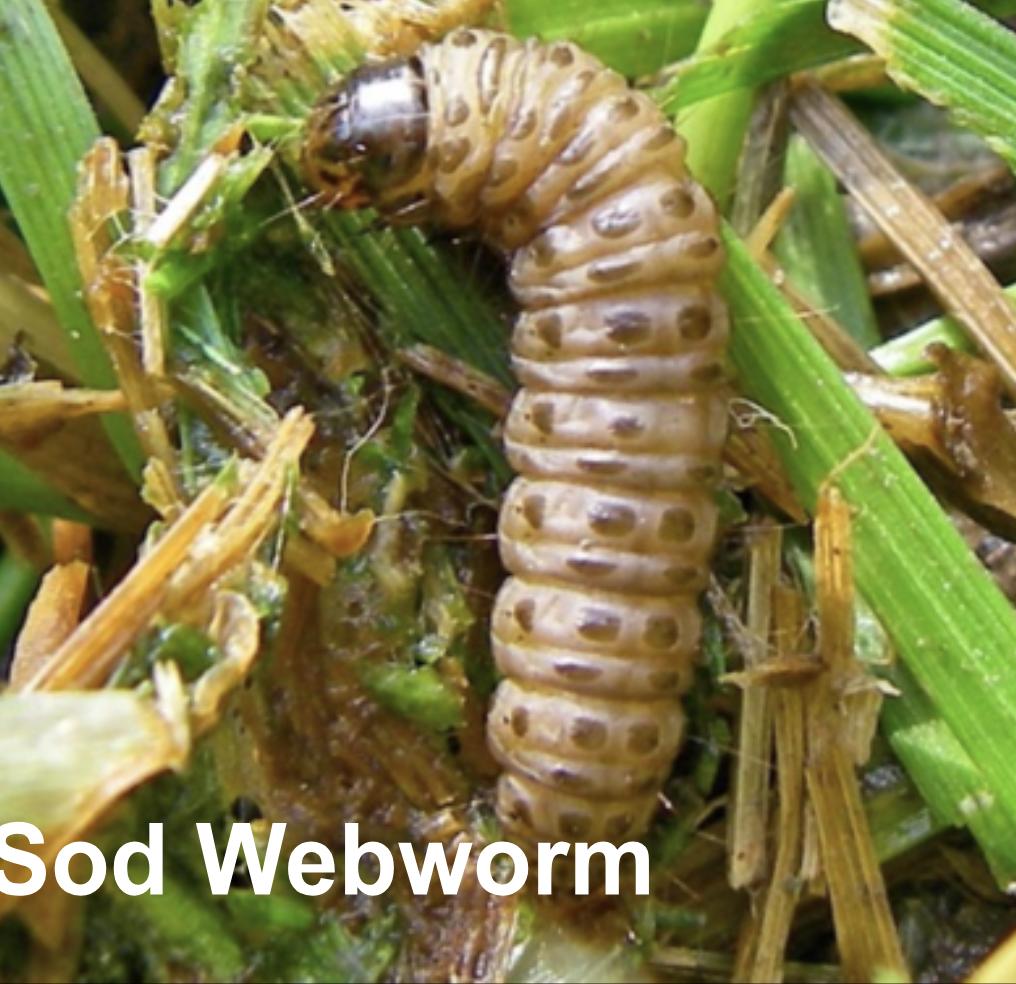
What do they look like?
Brown head, brown/ green body with dark spots up to 25mm
What are they doing in my lawn?
They live in the soil and thatch of the lawn and feed at night on leaves and stems.
How did they get there?
Grey/brown native moth fly in and drop eggs on lawn at night. May lay eggs on eaves, etc as they are attracted to light.

What do they look like?
Dark head, dark body up to 50mm long. Curl up when disturbed
What are they doing in my lawn?
They live in the soil. Feed at night at ground level, chewing leaves and stems. They “cut” down the young plants as they feed.
How did they get there?
Night flying moths drop eggs on the lawn and garden. They are also attracted to lights and may lay eggs on eaves, etc.
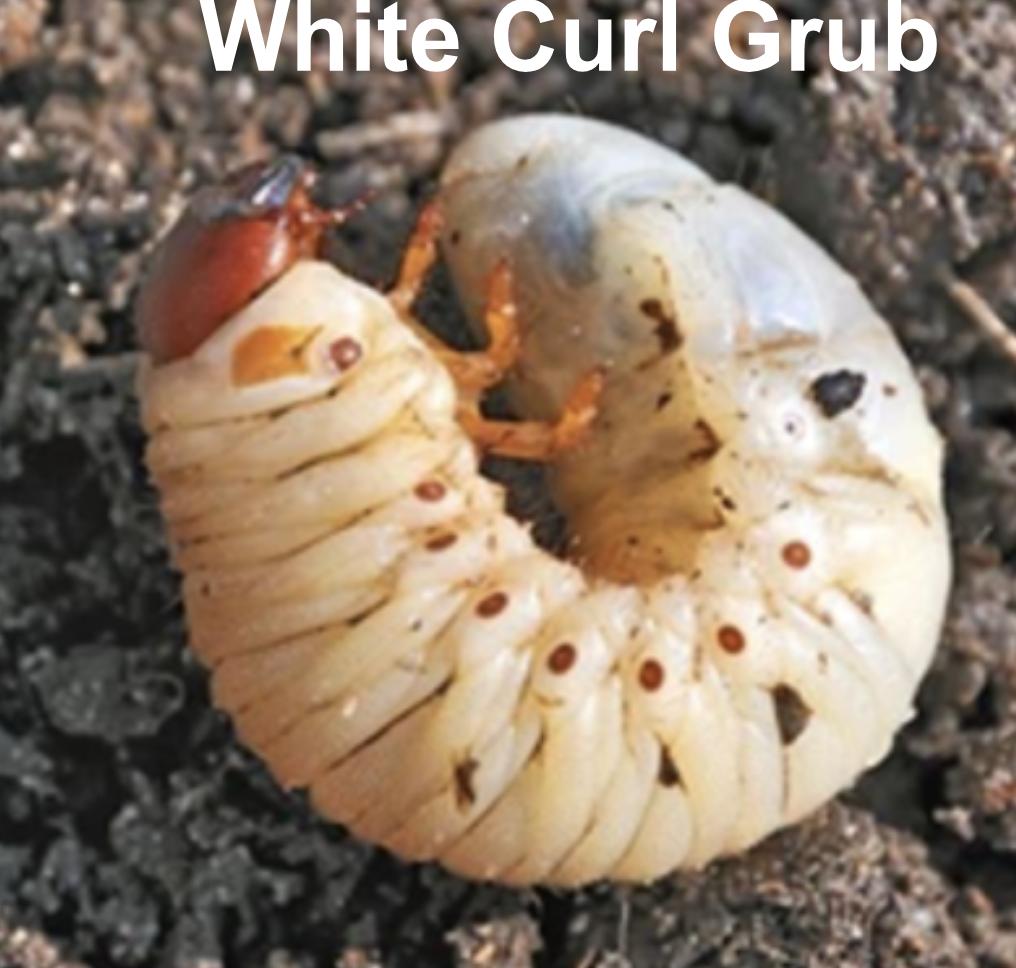
What do they look like?
Reddish brown head with white body 15 to 60mm long, C-shape with three pairs of legs
What are they doing in my lawn?
Live underground, protected by soil, feed on roots and lower stems.
How did they get there?
African Black Beetle and other beetles can lay up to 12 eggs in soil.
Moth larvae feed on the leaf and stem of the grass plant and when overcrowded and hungry can be seen marching across the lawn in a frenzy for new food – hence the name “armyworm”. These guys tend to just “prune” your lawn back which can be unsightly but does not usually cause permanent damage. With time and effort you lawn can likely be restored.
One moth can lay more than 500 eggs, so it is logical to surmise that an infestation can take hold quickly. Check your eaves, gutters, fences, outdoor furniture and clothesline for pale brown cocoons of eggs waiting to hatch and sweep them down with a broom. This is a “heads up” that you should be treating your lawn now to protect it.
The scarab beetle larvae feed on the root of the turf plant. They are often mistaken for witchetty grubs. There are many species and common names for them including curl grubs, c-grubs, cockchafer and African Black Beetle. A healthy lawn with seasonal growth will withstand normal activity from beetle larvae, but a serious infestation (25 or more grubs per square metre) left untreated can cause irreparable damage to your lawn because they destroy the plant root and the grass can no longer access moisture and nutrient. Affected turf will eventually detach from the soil – dead.
Common signs of lawn grub invasion
Before you spot these root and leaf feeders in action, you’ll likely notice the signs of a lawn afflicted by grubs. It can happen very quickly, so here’s what to look out for:
Signs of moth grubs:
- Moths flying around at dusk. They are attracted to lights.
- Creamy coloured cocoons of eggs on your eaves, gutters and plants.
- Sudden isolated patches of brown turf, stripped of leaves.
- Brown patches of turf growing wider fast.
- Caterpillars on the surface of the lawn – severe armyworm!
- More birds and wasps on your lawn. Birds will rip out tufts of grass in search of grubs.
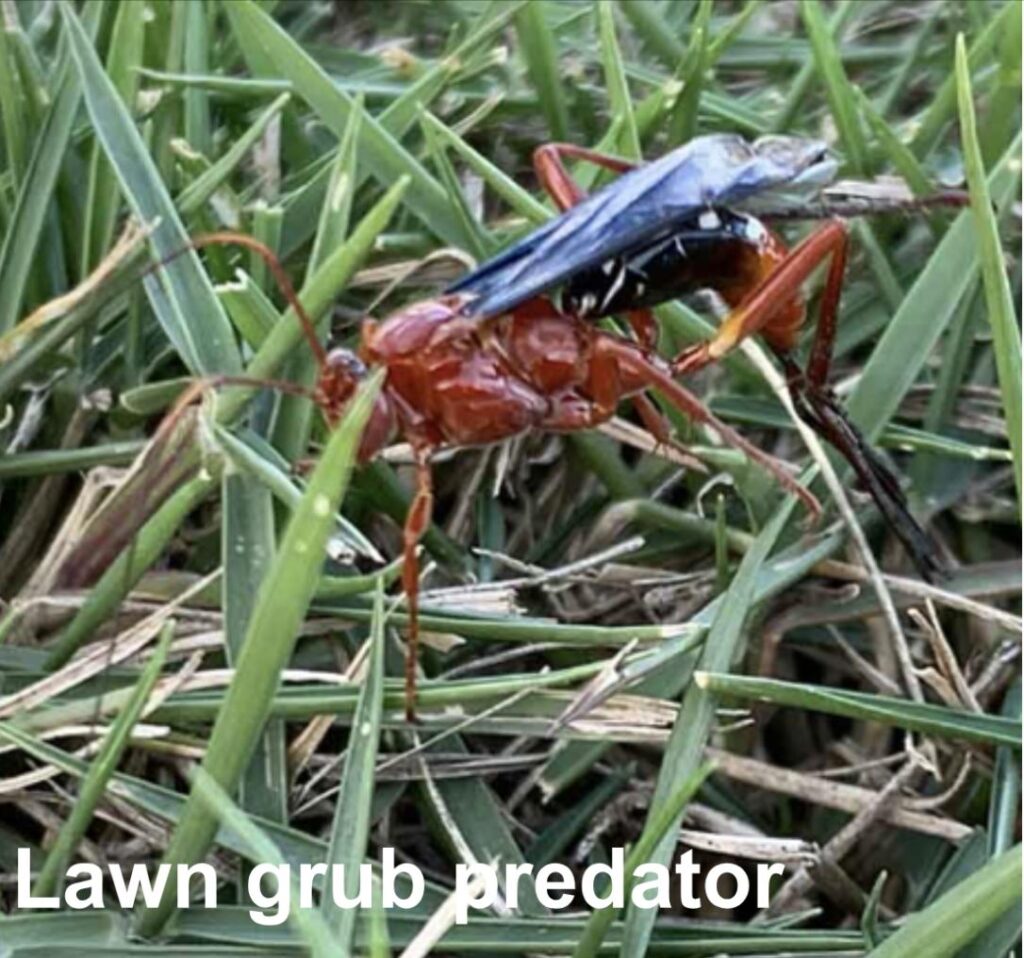
Signs of beetle grubs, the above and:
- Shrivelled leaf, yellow spotty patches where the turf pulls straight out of the soil
- Spongey lawn to walk on.
Test for lawn grubs in your turf
If you suspect lawn grub activity, try a simple grub test:
- Have a look at the root level and see if any are readily visible – they are most activity early evening to early morning.
- Pour a bucket of soapy water (30ml of dishwashing liquid to 9L of water) over the surface (1sqm) and see if any grubs rise to the surface within 10 mins. This is a very good test for moth grubs that live in the thatch of the turf.
- Put a wet towel or hessian sack on the lawn in the evening and check it in the morning. Again, this test works well for moth grubs.
- Beetle larvae live in the soil and feed on the roots of the plant. To identify them, you would need to dig down with a spade.
To keep a healthy, lush lawn over spring and summer, it is important to keep vigilant for the signs of lawn grub. They are active every growth season each year and can seriously affect a lawn in days. It’s not really a matter of if they will hit your yard, but WHEN.
If you notice signs of infestation, delaying treatment could be disastrous for your lawn, so let’s explore treatment options.
Choosing the right lawn grub killer solution
Applying chemical insecticides is the most effective treatment of lawn grubs.
There are two basic types: systematic or contact insecticides. What’s the difference?
Systematic insecticides are absorbed by and transported through plants that lawn grubs feed on, making the plant toxic to feeding larvae. Contact insecticides kill by penetrating the “skin” of pests.

Systematic:
The gold star of lawn grub treatment is Acelepryn. It targets pests of many varieties, killing the feeding larvae and the eggs before they hatch. As a systematic insecticide, Acelepryn provides a “forcefield” over your lawn for up to six months. The best time to apply is early to mid-September as growth season begins and then again February/March. Its active ingredient is chlorantraniliprole. It is safe to use on all turf varieties and will treat and protect against armyworm, cutworm, sod webworm and beetle larvae. Also, it won’t harm beneficial organisms like bees and earthworms. It is safe for the dog and kids to play on after it has been watered in and is dry.
Contact:
These insecticides do just that – kill on contact. There is no residual protection for your lawn with this type of pesticide but they are best for treating big infestations to stop them in their tracks before more damage occurs.
Remember armyworm are the larvae of moths. They will be laying eggs all growth season. So, although contact chemical insecticides are generally cheaper to purchase and work extremely well instantly, you will need to keep vigilant and apply more often to keep the voracious feeders at bay.
Bifenthrin is the commonly used active ingredient in contact lawn grub insecticides and is available in many different labels. Bifenthrin is best applied late in the afternoon/dusk when temperatures are cooler and grubs are at their busiest to make the most out of the “contact”. A second application will be required in two weeks to treat the full life cycle. If you detect any grubs after this, reapply every two weeks until they are gone.
Natural / organic:
If you prefer avoiding the use of chemicals, there are natural pest control methods that are well worth a try:
Soapy water over the lawn in the morning to bring grubs to the surface for natural predators or collect the grubs yourself and dispose of them.
Take down any cocoons on your eaves, gutters, clothesline, etc to minimise the number of eggs that hatch.
Neem is a naturally occurring oil that can be used as a spray treatment to kill insects that feed on plants.
Products containing beneficial predatory Nematodes – microscopic worms that occur naturally in all soils – can be applied with a watering can or pump sprayer. Apply during the evenings – sunlight kills nematodes very quickly.
Safety tips
When applying any kind of chemical treatment to your lawn, be sure to read the safety information provided by the manufacturer to protect your children, pets, the environment and yourself as the user. Follow these tips for safety:
- Invest in a high-quality, properly labelled pesticide. This will kill lawn grubs without further damaging the grass roots of an otherwise healthy lawn.
- Always use appropriate personal protection equipment (PPE) – for example: gloves, long clothing and a mask when mixing and applying products to your lawn.
- Read and follow the instructions for use and adhere to all application rates.
- Follow instructions on watering in and keep kids and pets off until dry.
- Store insecticides in a safe place out of reach of pets and children.
Steps to restore your lawn
You might think that once you have eliminated all the lawn grubs you can see, the job is done – but the truth is lawn recovery is the next step. After treating for lawn grub:
- Rake out any dead grass
- Keep the lawn well-watered
- Fertilise with premium fertilisers combining fast and slow-release granules for immediate nutrients and a sustained boost over several weeks.
- Use liquid kelp to promote leaf growth and strengthen roots. Turf will eventually grow across affected areas.
- Replace severely affected turf for a quick fix – most likely necessary in the case of beetle grub infestation where roots are eaten out.
- Spray with Acelepryn to protect your lawn from the next invasion.
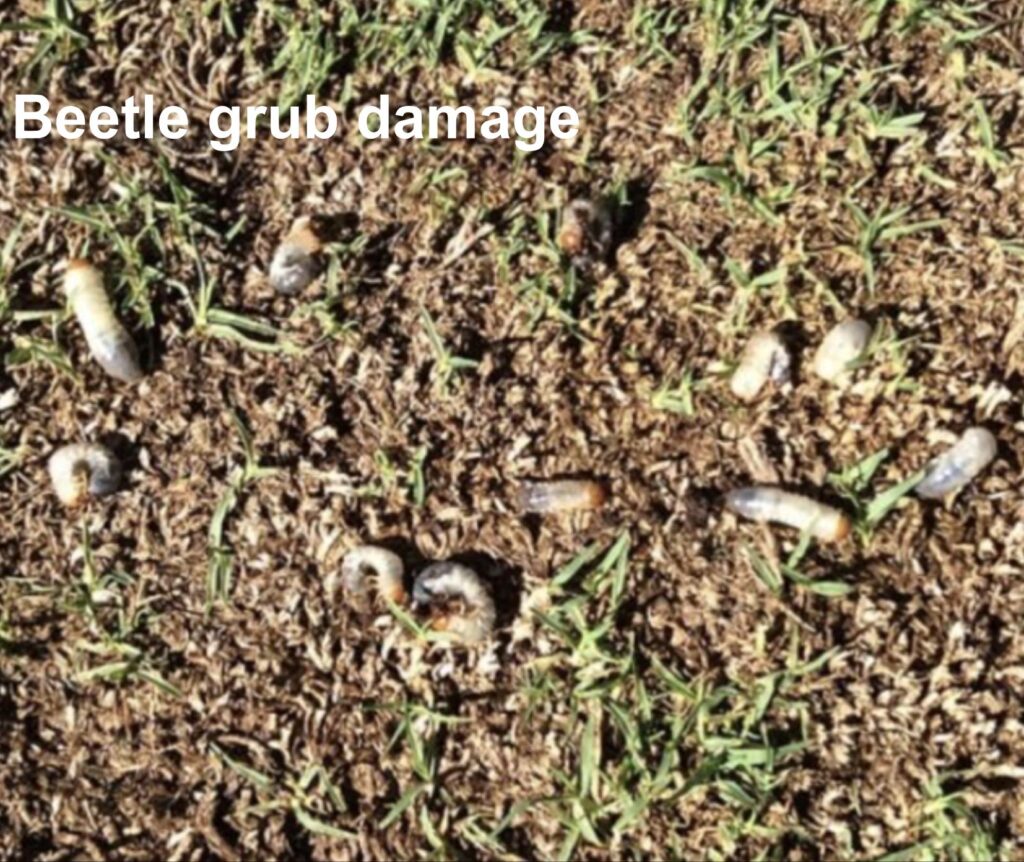
Continued protection against lawn grubs
As an insurance policy against lawn grub invasion, apply Acelepryn early to mid-September and again in February/March. Mark the date on your calendar so you don’t forget!
At West Turf we spray for lawn grubs regularly during growth cycle, and then again within days of harvest and delivery to our customers. We use Acelepryn and Bifenthrin to ensure lawn grubs are not present in your turf order. We strongly recommend using Acelepryn four weeks after installing your new lawn for guaranteed protection against attack.
Don’t let the grubs ruin your summer lawn!
If your lawn needs extra support to recover from lawn grub damage, we can provide advice and small quantities of turf for fix-ups. Give us a call on 1300871366.

